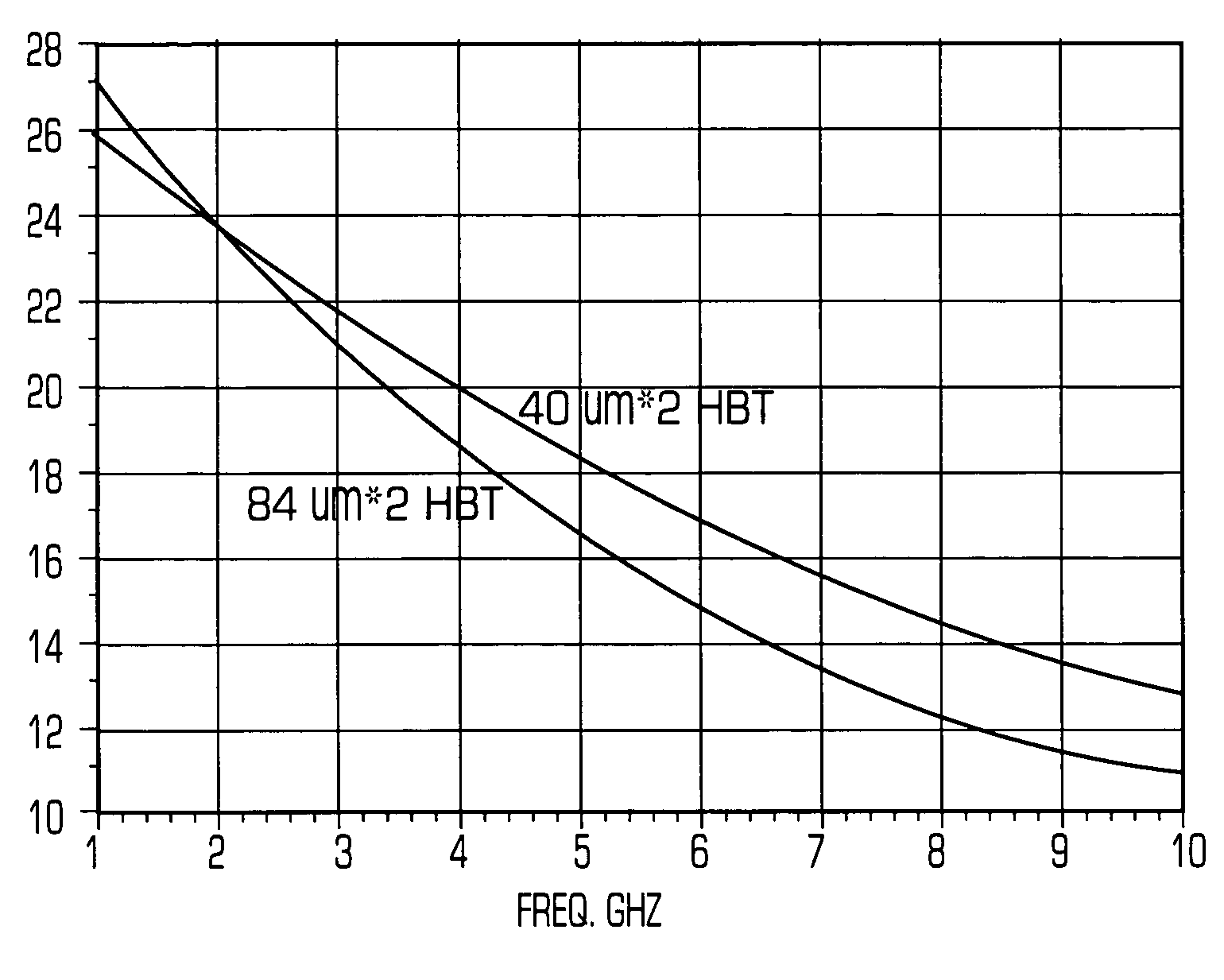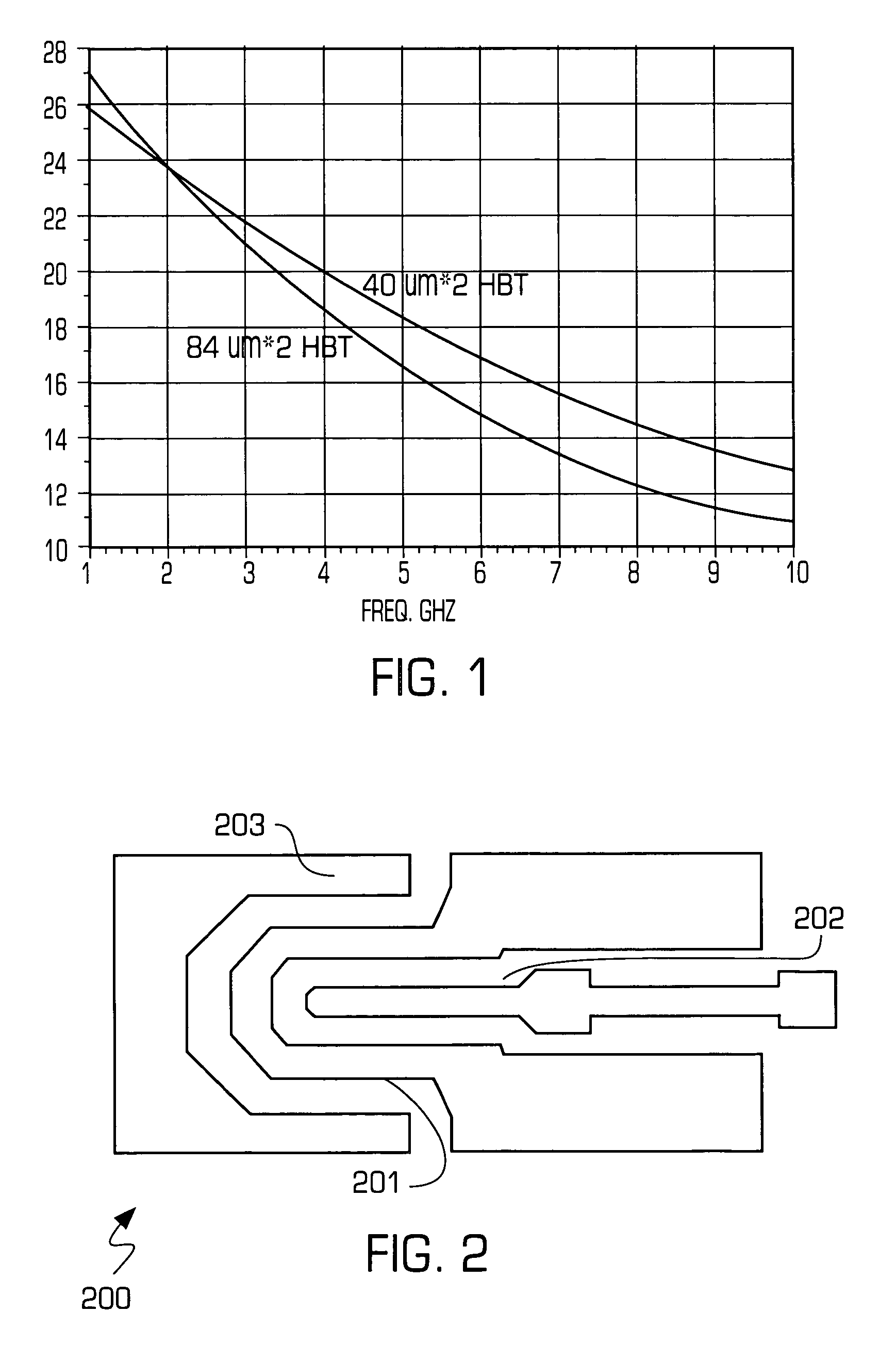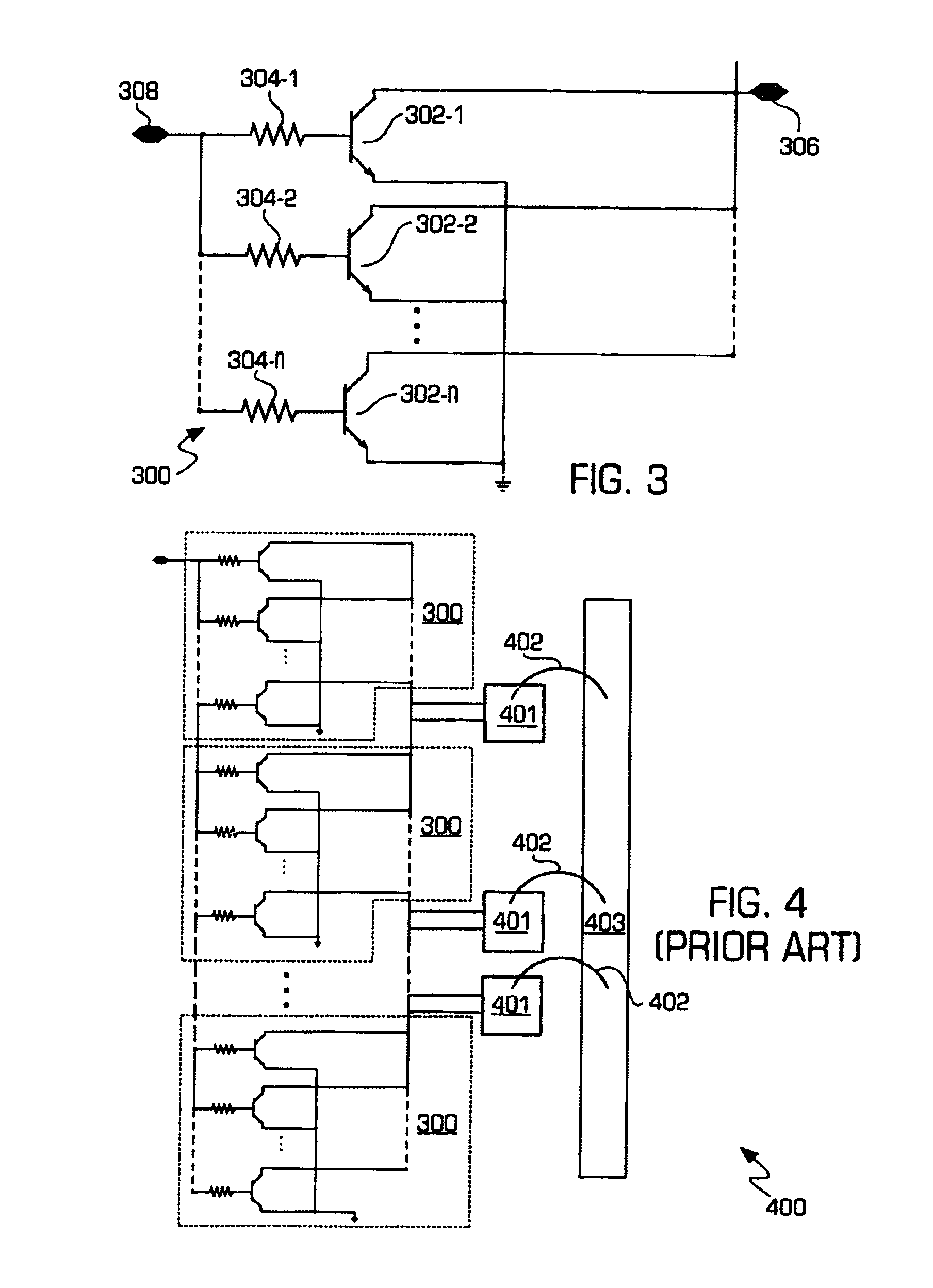High linearity smart HBT power amplifiers for CDMA/WCDMA application
a power amplifier and high linearity technology, applied in the field of linear power amplifiers, can solve the problems of diode draw current, significant diode draw current, and inefficient traditional bias circuit topologies for precise control of quiescent bias and dynamic operating point, so as to improve the rf efficiency and stability of the combiner, and the effect of high transistor gain
- Summary
- Abstract
- Description
- Claims
- Application Information
AI Technical Summary
Benefits of technology
Problems solved by technology
Method used
Image
Examples
Embodiment Construction
[0022]The HBT cell unit size is described.
[0023]The emitter ballast resistors are believed to help the thermal stability of power HBT. However, a portion of the output power is dissipated in those resistors and this reduces PAE, particularly at a low supply voltage. Extensive reliability tests revealed that power HBT's can be operated with no emitter ballast resistors without the thermal runaway phenomenon with a lower emitter current density. The present invention relates to an improved design comprising a robust HBT and circuit topologies that includes optimum unit HBT geometry with proper base resistance for RF stability, and efficient unit device combining topology with combining odd mode resistors and a novel active device bias with switch sensing smart function capability. To further improve PAE an optimum HBT geometry and an optimum HBT combining art are selected. The inventors have discovered that larger size transistors have higher power gain at lower frequency.
[0024]FIG. 1...
PUM
 Login to View More
Login to View More Abstract
Description
Claims
Application Information
 Login to View More
Login to View More - R&D
- Intellectual Property
- Life Sciences
- Materials
- Tech Scout
- Unparalleled Data Quality
- Higher Quality Content
- 60% Fewer Hallucinations
Browse by: Latest US Patents, China's latest patents, Technical Efficacy Thesaurus, Application Domain, Technology Topic, Popular Technical Reports.
© 2025 PatSnap. All rights reserved.Legal|Privacy policy|Modern Slavery Act Transparency Statement|Sitemap|About US| Contact US: help@patsnap.com



